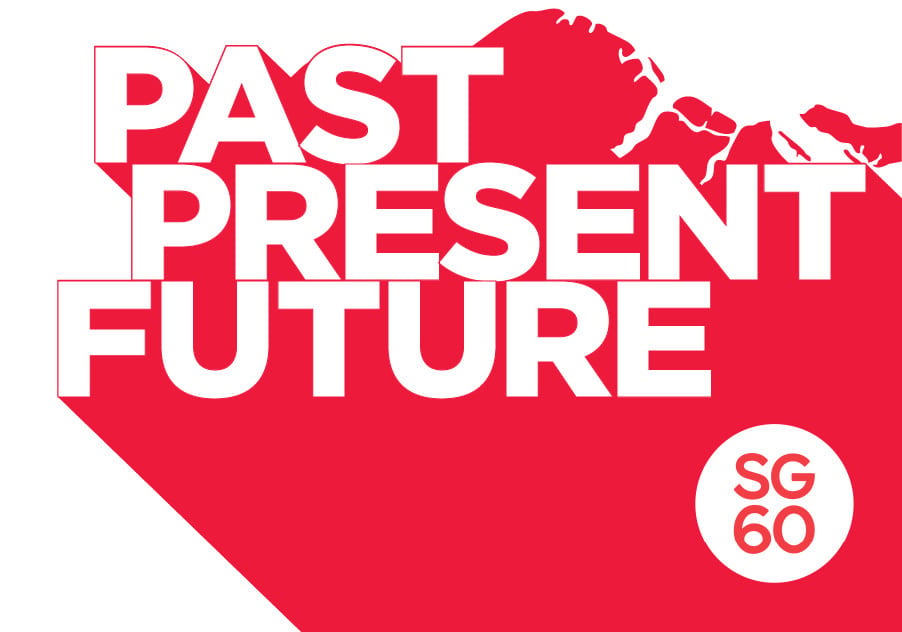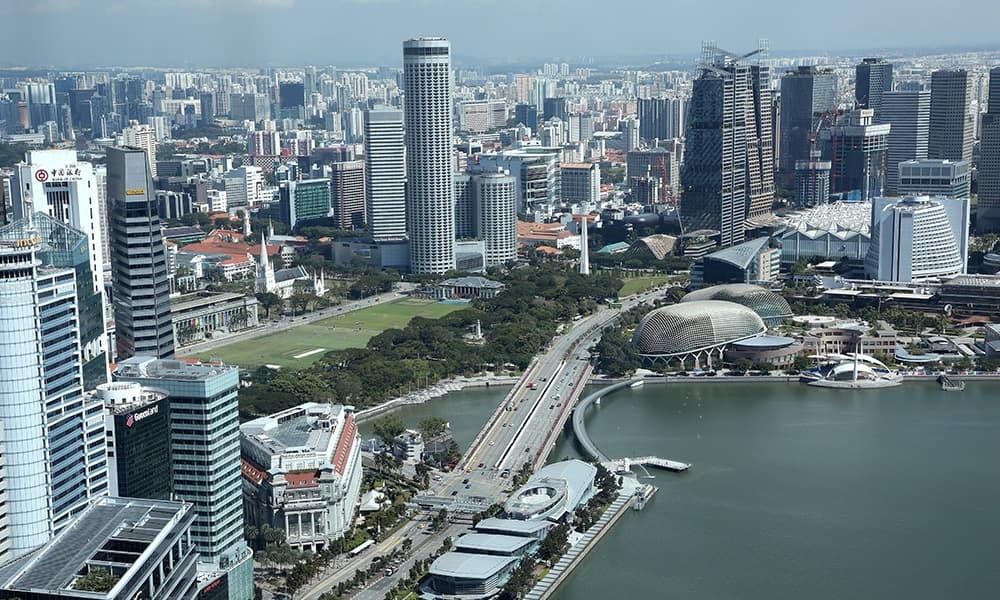SCROLL DOWN
BRANDED CONTENT
What you may not see when you look at Singapore’s changing skyline
People in the built environment sector share how past safety lessons and smarter, greener and friendlier approaches are shaping the city
BY RACHEL CHIA | PUBLISHED 02 SEP 2025
BRANDED CONTENT
What you may not see when you look at Singapore’s changing skyline
People in the built environment sector share how past safety lessons and smarter, greener and friendlier approaches are shaping the city
BY RACHEL CHIA | PUBLISHED 02 SEP 2025
Ms Liza Ismail (pictured) still remembers the Housing Board flat in Bukit Batok where she lived for 15 years.
It was within a simple rectangular block painted in light blue. The lifts only stopped on the sixth and 11th storey. The void deck was an empty, open space, used occasionally for weddings.
That was the Singapore she grew up in: Practical, modest and still developing.

Today, the 47-year-old administrative support staff still lives in the west with her husband and their teenage daughter and son. But the neighbourhood looks different. Nearby: Sleek shopping centres with rooftop gardens, community spaces with water features and pavilions, and an array of eateries, supermarkets and childcare centres.
What she does not see is what lies beneath the facade of convenience and modernity: The efforts that go into building a Singapore that is safer and better prepared for the future.
The evolution had its challenges – and lessons.
Painful lessons from incidents such as the Hotel New World disaster in 1986 and the Nicoll Highway collapse in 2004. Thirty-three people died in the first, and four workers were killed in the second.
Such tragedies pushed Singapore to “look hard at (its) systems” and catalysed major improvements in building safety, says Mr Thanabal Kaliannan, 59, commissioner of building control and group director for building resilience at the Building and Construction Authority (BCA).
A nationwide structural inspection regime was introduced in 1989.
Mr Thanabal, who joined the former Public Works Department as a structural engineer in 1993 before taking on a regulatory role in 1999, helped strengthen the regime.
The Building Control Division of the Public Works Department merged with the Construction and Industry Development Board in 1999 to form BCA.
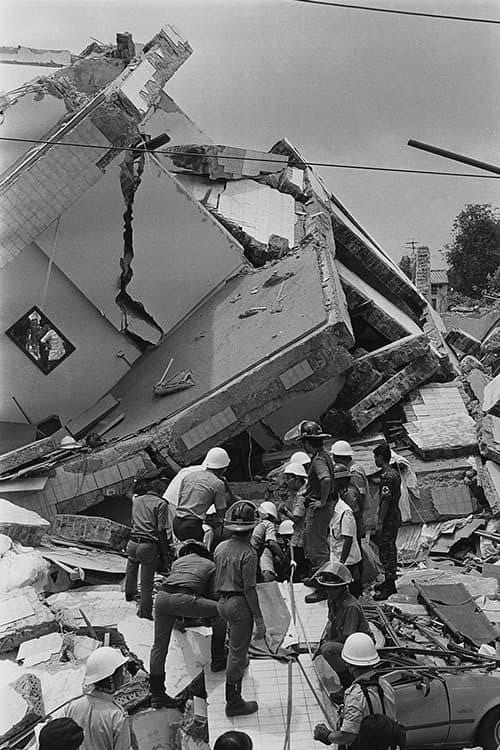
Since then, the structural inspection regime has evolved into a data-driven system with digital tools for more targeted inspections of ageing buildings.
With over 34 years in the built environment industry, Mr Thanabal Kaliannan has contributed to Singapore’s transformation, supporting iconic projects like the Helix Bridge through his regulatory work.
Three years ago, Mr Thanabal led the roll-out of a facade inspection regime leveraging drones, artificial intelligence (AI) and smart scanning technologies – making Singapore one of the world’s first to adopt such tech-enabled regulation.
Singapore’s built environment sector has shifted from “build to last” to “build to adapt”, he observes, pointing to new technologies and construction methods that can adapt to climate change, denser living and use of smart systems.

The facade of buildings in Singapore are inspected with the help of technologies like drones and artificial intelligence.
“We now design for flexibility and future-readiness,” he adds, highlighting changes that may go unnoticed in the city’s evolving skyline. “Even small shifts, like going from physical blueprint rolls to digital structural submissions, reflect a sector that’s becoming more agile, efficient and green.”
As Singapore celebrates 60 years of independence, the people behind the city’s changing skyline reflect on how the built environment has evolved – not just building upwards, but thinking forward with spaces that are greener, smarter and friendlier.
Mr Thanabal Kaliannan, commissioner of building control and group director for building resilience, BCA
We now design for flexibility and future-readiness. Even small shifts, like going from physical blueprint rolls to digital structural submissions, reflect a sector that’s becoming more agile, efficient and green.
Building a nation
Singapore's built environment sector has transformed the city’s skyline and shaped the way we live. Here are some key milestones.

Greener
Building sustainably
Since moving into their Punggol home two decades ago, Mr Ang Kian Seng and his family of five have not turned on the air conditioning, except when the haze is “very bad”.
“The fan is (more than) enough,” says the father of three daughters in their 20s, who says his five-room HDB apartment on the 16th storey is well-ventilated when the front door and windows are open.
Mr Ang is intimately familiar with energy use as one of the pioneers of the BCA Green Mark certification scheme, which was launched 20 years ago.
Mr Ang Kian Seng at the Zero Energy Building located within BCA’s Braddell campus. It was constructed with mass-engineered timber – a sustainable material which helps stabilise indoor temperatures – and designed to encourage natural airflow.
The scheme is a joint initiative by the Government, industry players, and non-profit organisation the Singapore Green Building Council. It rates the environmental impact of Singapore’s buildings, which account for over 20 per cent of the country’s carbon emissions, according to data from the National Climate Change Secretariat.
Green buildings were a tough sell in the early days when climate change was not high on business agendas, recalls the 61-year-old, who is now group director of BCA’s Environmental Sustainability Group.
Number of Green Mark-certified buildings in March 2025, up from 17 in 2005. Together, they save over 4.2 billion kWh of energy annually – enough to power one million four-room HDB flats for a year
Things changed when Singapore embarked on its sustainable development strategy near the turn of the decade, he says, with Green Mark certification becoming a criteria for certain government land sales.

The National Library Building at Victoria Street was one of the first to receive the Green Mark award.
Today, with the nation’s commitment to reach net-zero emissions by 2050, Singapore’s Green Building Masterplan aims to achieve ‘80-80-80 in 2030’:
-
Having 80 per cent of buildings adopt green efforts
-
For 80 per cent of new buildings to be Super Low Energy developments
-
Clock an 80 per cent improvement in buildings’ energy efficiency from 2005 levels, through R&D efforts
Net zero refers to the state where the amount of manmade greenhouse gases released into the atmosphere equals the amount removed.
Speaking to The Straits Times at BCA’s Braddell campus,
Mr Ang highlighted cutting-edge features in its Zero
Energy Plus Building, which generates more energy than
it uses.
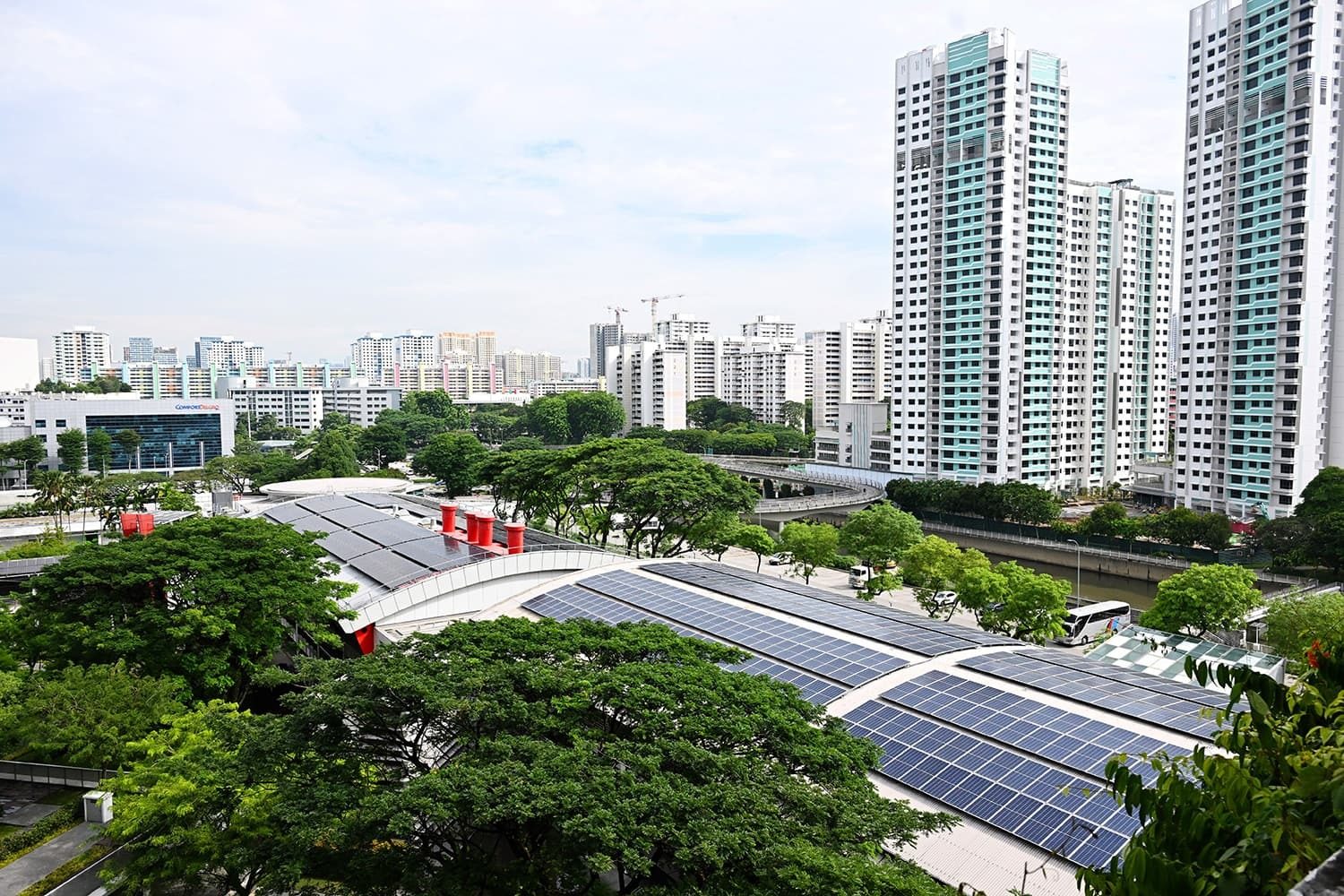
Spot the difference between the solar panels on the two roofs. The ones on the right can catch sunlight from both sides of the panel, including indirect light, for more energy.
These include combining fans with low-energy cooling systems, using chilled water panels, and leveraging smart technologies such as an app that lets workers control the temperature and lighting at their desks.
“We (just) need to balance user comfort and energy use,” says Mr Ang. “New solutions address this dynamic.”
Watch the video
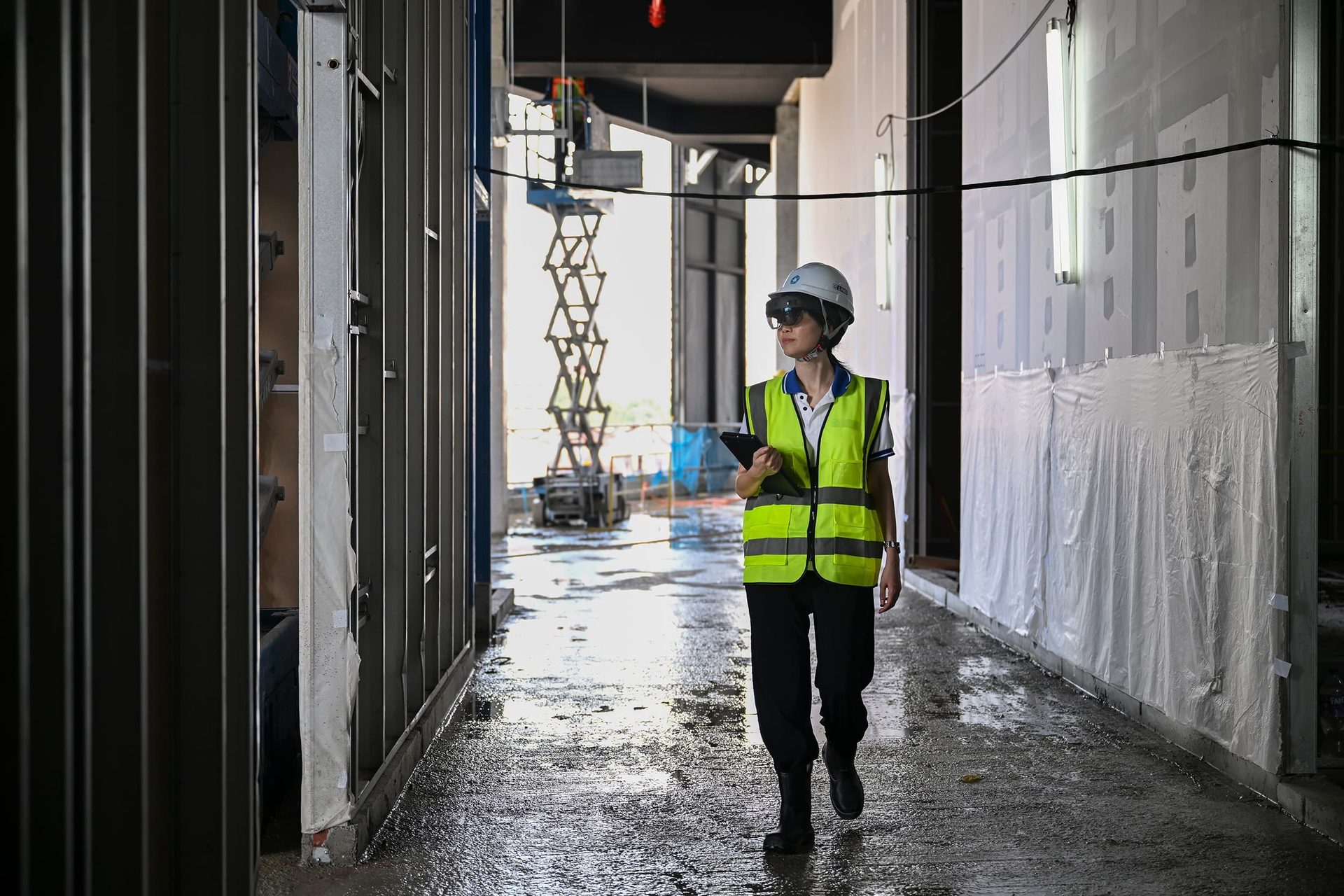
Smarter
Tapping technology
When Ms Michelle Lee walks into the main lobby of Sengkang General Hospital, she feels a surge of pride.
About a decade ago, her team leveraged building information modeling (BIM) technology to coordinate smoother construction of the hospital, enabling it to open three weeks ahead of schedule in 2018.
BIM creates a digital twin of a building that architects and contractors can use for almost everything – from material procurement and calculating carbon footprint, to tracking prefabricated components and scheduling installation of plumbing, electricity and air conditioning.
“You can simulate how the building is going to be constructed, by when, and how much work is to be done,” says Ms Lee, 35, who is digital delivery manager at Japanese construction firm Penta-Ocean Construction. “Because we are able to coordinate this virtually, we eliminate a lot of rework.”
Other time-saving tools used include an automated logistics monitoring system to track the delivery and installation of prefabricated components in real time, and a cloud platform for digital design collaboration and approval of construction drawings.
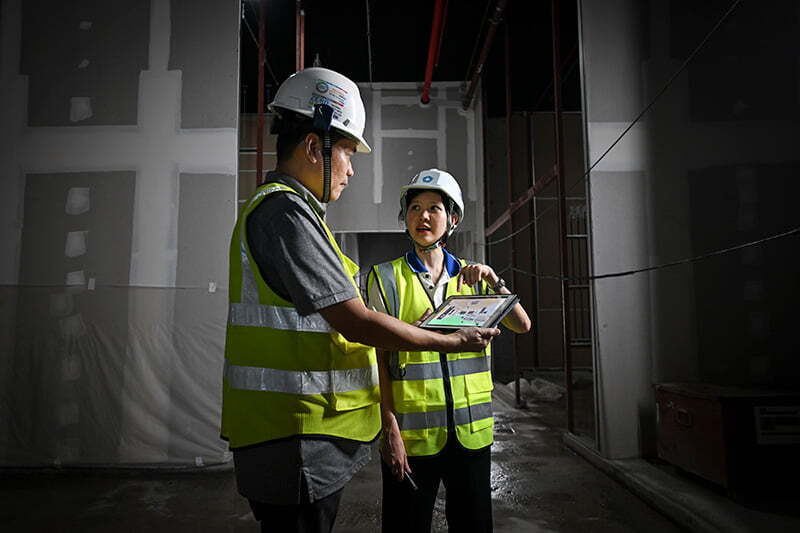
Digital delivery manager Michelle Lee and her team at Penta-Ocean Construction have been leveraging building information modeling (BIM) technology for smoother construction.
Together, these technologies have shaved hundreds of hours off the construction process, she says.
This pace of innovation is surprising even to Ms Lee, who graduated with a bachelor’s degree in civil engineering from the National University of Singapore in 2012.
Changing the way we build
“I wasn't expecting to be doing BIM, but there was a need for a specialist when BCA was rolling out new requirements,” she says. “I found it quite interesting, because it’s like a gamified simulation of construction.”
This led her to pursue a PhD in digital construction technology at the Osaka University in 2019. “Initially BIM had a very small use case, purely for visualisation. Moving forward, we saw use cases grow,” she says.
Today, her role involves implementing suitable technologies across the company’s projects, which include Singapore General Hospital’s Elective Care Centre and National Dental Centre Singapore next to Outram Park MRT station, and the Johor Bahru-Singapore Rapid Transit System (RTS) Link’s Woodlands North station.
One of the projects that Ms Lee and her team are currently working on is the Johor Bahru-Singapore Rapid Transit System (RTS) Link’s Woodlands North station.
The main benefit, Ms Lee says, is that user needs can be rigorously accounted for before construction begins: “People get a space that has gone through many iterations to make sure it fits their purpose.”
Digital tools are similarly helping Ms Heng Phooi San better meet the needs of users of a nine-storey factory development at 20 Woodlands Link, which houses the offices of industrial firms.
The development, one of over 300 properties managed by real estate and facilities management firm CBRE, used to be plagued by issues such as broken toilets, high-rise littering, illegal smoking, and dumping of hazardous waste.
That changed when Ms Heng, 37, took over as assistant facilities manager in 2023. “I always had an interest in problem-solving,” says the business administration graduate.
Using a customer relationship management platform, she quickly responds to issues raised by tenants, which come in as emails. Monthly data reports help her calibrate maintenance levels.
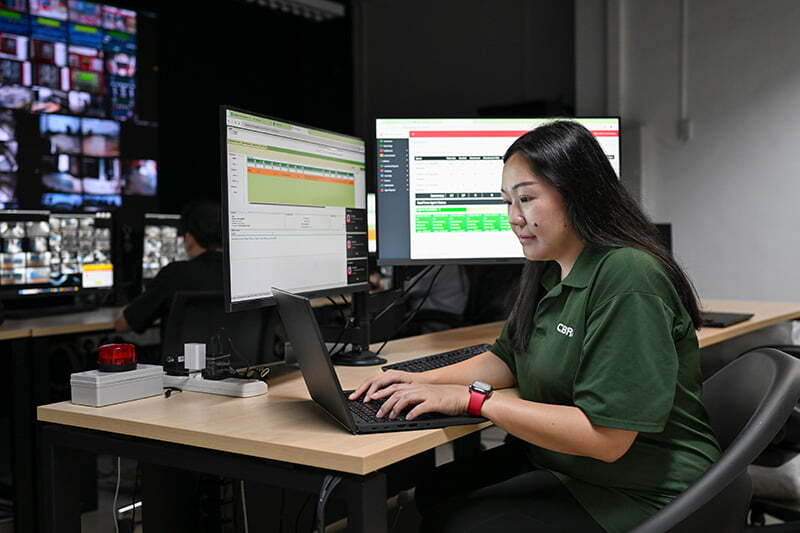
Ms Heng Phooi San uses tech tools such as a customer relationship management platform to better meet the needs of those working in the building.
Then there is an internal chatbot she can query for specific information, such as the model of a light bulb that needs replacing. Smart smoke detectors in stairwells have successfully discouraged illegal smoking, while drones are used to inspect the facade for safety checks, and specific issues like insect hives.
An AI system integrated with CCTV footage – housed in a command centre on the building’s top floor – also sends her alerts related to fire alarms, water supply issues, suspicious loitering and illegal dumping.

Ms Heng with her colleague, senior technician Jumadi Abdillah, using a drone to inspect the facade of the building.
This suite of tools has halved the time taken to address issues from weeks to days, estimates Ms Heng. In previous roles at other firms, she relied on paper files, WhatsApp chats, physical inspections and even sticky notes to manage the barrage of building issues.
“In the old days, we reacted. But the future is smarter, where technology and data help us identify issues earlier,” she says.
“The tenants are very happy. They tell me the building facilities have improved a lot, and it’s now like a second home.”
Ms Heng Phooi San, assistant facilities manager, CBRE
In the old days, we reacted. But the future is smarter, where technology and data help us identify issues earlier.
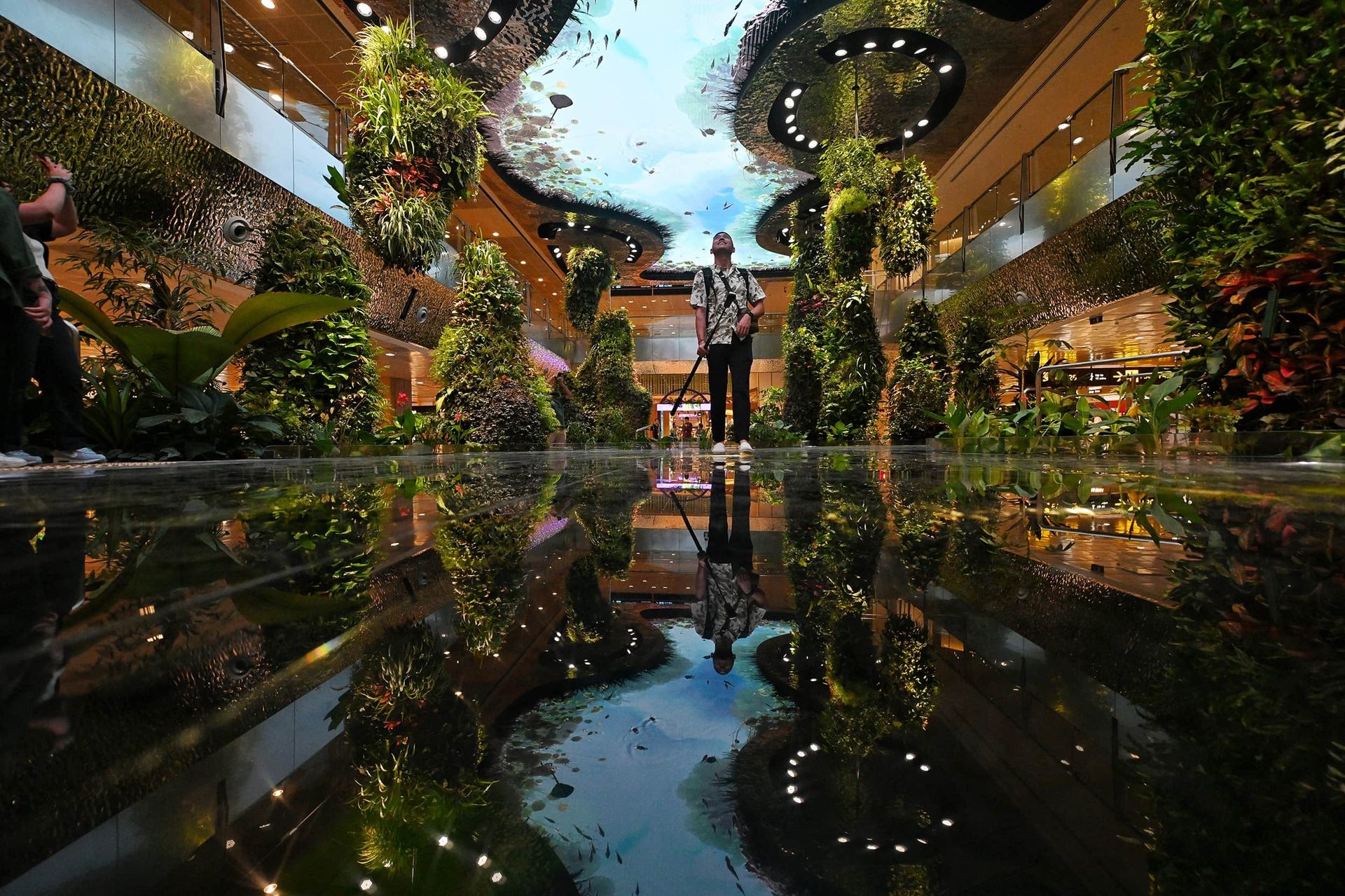
Friendlier
Enhancing inclusivity
Over at Changi Airport, travellers focused on their flights might not linger long enough in Terminal 2 to appreciate its finer points.
Still, design features are hard at work, guiding tens of millions of passengers a year to the right places.
These include obstacle-free pathways, check-in counters that channel traffic towards a central multimedia feature, and varying ceiling heights, colours, curves, and landscape elements as intuitive guides and signposts.
Carpets dampen noise, while matte materials and muted finishings offer a calming look. Nature abounds, including an indoor garden amid a glass-topped pond that children can safely play on.
“For people rushing through a busy airport, it’s a nice oasis,” says architect Law Yoke Foong, who was part of the 3.5-year-long Changi T2 expansion project. The terminal reopened in November 2023.
“When you move from one point to another, there are sensory elements, smells from the leaves.”
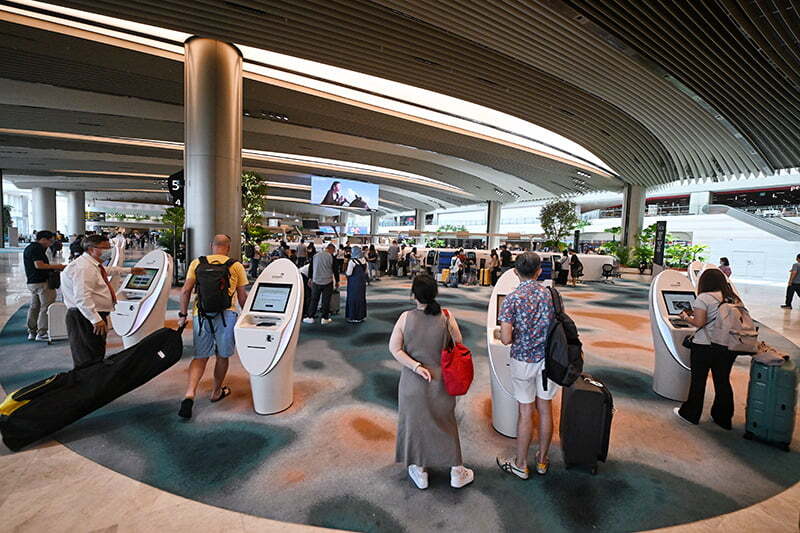
Changi Airport’s Terminal 2 was designed to be inclusive, with features such as obstacle-free pathways and check-in counters that channel traffic toward a central multimedia feature.
Some of these considerations come from Ms Law’s learnings from previous projects, including MRT stations, pet-friendly shopping mall One Holland Village, and the dementia-friendly Lions Home For The Elders in Bishan.
The 49-year-old is head of business and executive director at RSP Architects Planners & Engineers.
Inclusive spaces, such as Changi’s T2 – which in 2023 won the BCA Universal Design Excellence Award – are increasingly common in Singapore.
Ms Law Yoke Foong was part of the 3.5-year-long Changi T2 expansion project, which won the BCA Universal Design Excellence Award in 2023.
This is in part due to regulations that require
buildings to accommodate the needs of the elderly,
people with disabilities, and families with young
children – as well as industry shifts to meet these
requirements in dignified ways, such as integrating
wheelchair ramps into planters, Ms Law says.
“We are really embracing this ageing nation, because the people designing it are going to age as well,” she says. “We have to design spaces for ourselves, because we’ll eventually be using them.”
Ms Law hopes Singapore’s buildings can “age gracefully” in the decades to come, remaining accessible to all even as times change.
“People are quite knowledgeable about new developments, and will suss out whether they can bring their pet, children or parents. So if we are creative about inclusivity, it could be a nicer space for every one of us.”
It’s a vision that resonates with BCA’s Mr Thanabal, who has spent the past three decades ensuring Singapore’s buildings stand strong and resilient.
“Building safety is ultimately about people,” he says. “It’s not just technical standards or approvals; it’s about creating spaces where people can live, work, and gather – safely, confidently and with dignity.”
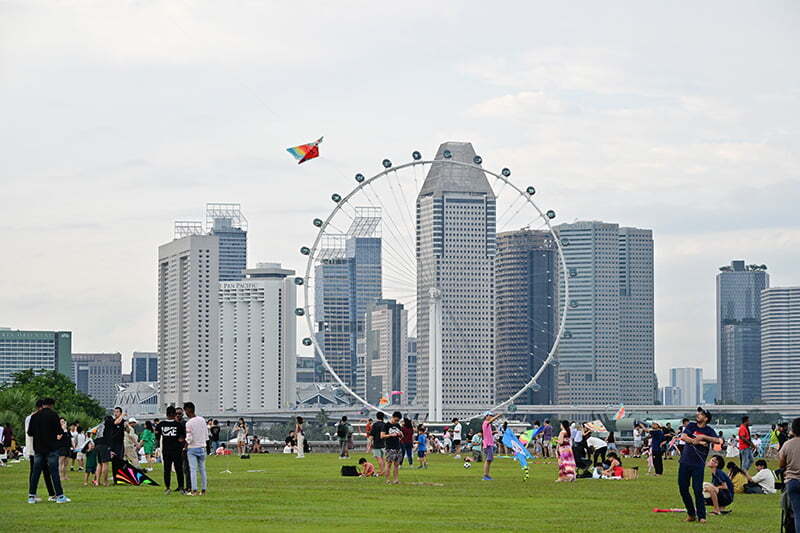
From tragedies like the Hotel New World Collapse to today’s smart, green and inclusive buildings, the story of Singapore’s built environment sector has been one of learning, adapting and improving.
It’s deeply meaningful work, he says. “Every secure lift ride, every stable beam, every column we never think twice about – these are the result of thousands of quiet, careful decisions made by professionals across the ecosystem.”

